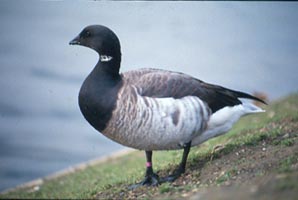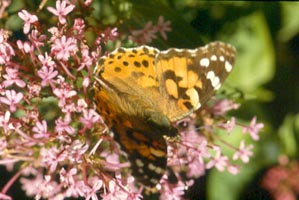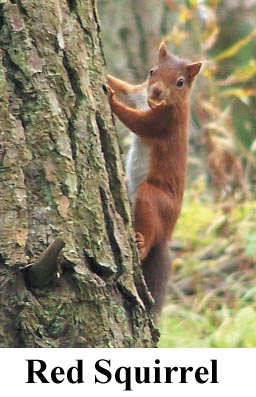| Dalkey Tidy Towns |
  |
| Dalkey Tidy Towns |
  |
Wildlife
Newsletter for the Township of Dalkey March 2009 - Michael Ryan |
Later
in the month it’s highly likely the first sightings will be reported
of Sand Martins, another regular early migrant and Swallows won’t be
too long behind them. There used to be a Sand Martin colony in the sandy cliffs
above the beach at Shankill. One of the first songbird migrants to arrive
is the Chiffchaff and they’ll soon be heard singing. They’re named
after their song a constant repetition of two notes. We hope to see some of
these birds when the South Dublin Branch of Birdwatch Ireland have a outing
to Kilcoole in April to look for newly arrived migrants and to say bye to
some of our wintering migrants. Everybody is welcome. We meet at 10.30 at
the car park beside Kilcoole ‘station’ then walk down the coast
looking at birds on the sea and in Birdwatch Ireland’s reserve inland.
If birds are nesting in your hedge the nest won’t be obvious so if you’re planning on trimming a hedge maybe get down low under the hedge or bush and look up. A nest will be much more obvious silhouetted against the light. If you leave out hair, dog or human, the birds sometimes take it to line their nest but don’t put anything in the nestbox; they might think there is already another bird in residence. I mentioned before about standing in a wood and watching a pair of Long Tailed Tits flying down and picking up feathers from a small heap on the ground. They’d then fly into a nest they were constructing a few yards away where the feathers would be used as a very cosy lining. The feathers were all small and white and looked more like the inside of a pillow than the remains of a bird so I was wondering where they had originated. I happened to mention my sighting to a friend who knew the area well. He told me it was in fact him who’d left the feathers there and was delighted they’d been used. It’s been proven that birds that have taking food provide in garden shave a better success rate when it come to having a family so keep feeding. The birds will have more time to feed insects to their young while taking advantage of the peanuts and sunflower seed you provide to feed themselves. |
| THE RED SQUIRREL IN DALKEY - ANTOINETTE KELSO |
||
| The
red squirrel is the only native squirrel in Ireland but its numbers are in
decline. There are only three populations of red squirrels left in the greater Dublin area. One is in the Dalkey- Killiney-Shankill area. The others are on the north side of Dublin in the Howth area and in St Anne’s Park. Its survival is being threatened by the ever increasing presence of the introduced American Grey squirrel. The red squirrel is the smaller of the two species and weighs about 250- 350kg. Grey squirrels out-compete the red squirrel because they can digest a substance in young acorns which the reds find indigestible. This reduces the availability of food for the reds especially in the winter when berries, fruit and seeds are scarce. Grey squirrels may also carry a viral disease to which the red squirrels have no natural immunity. As part of the ongoing conservation efforts to save the red squirrel in Dublin, a survey of both red and grey squirrels is being carried out in Dalkey and surrounding areas. This survey is being carried out by the Mammal Research Group at University College Dublin. We would like to know where squirrels, red or grey, are currently to be found. In particular, we need information on how many were seen, when they were seen and the habitat in which they were observed. Residents in Dalkey and the surrounding areas are a most important source of this information as they have access to private areas such as gardens to which researchers would not normally have access. Anyone who has seen either red of grey squirrels are invited to participate in this research by emailing sightings of red or grey squirrels to dublinredsquirrels@ucd.ie or by taking the time to stop and fill in a survey if you meet one of the researchers. |
 |
|